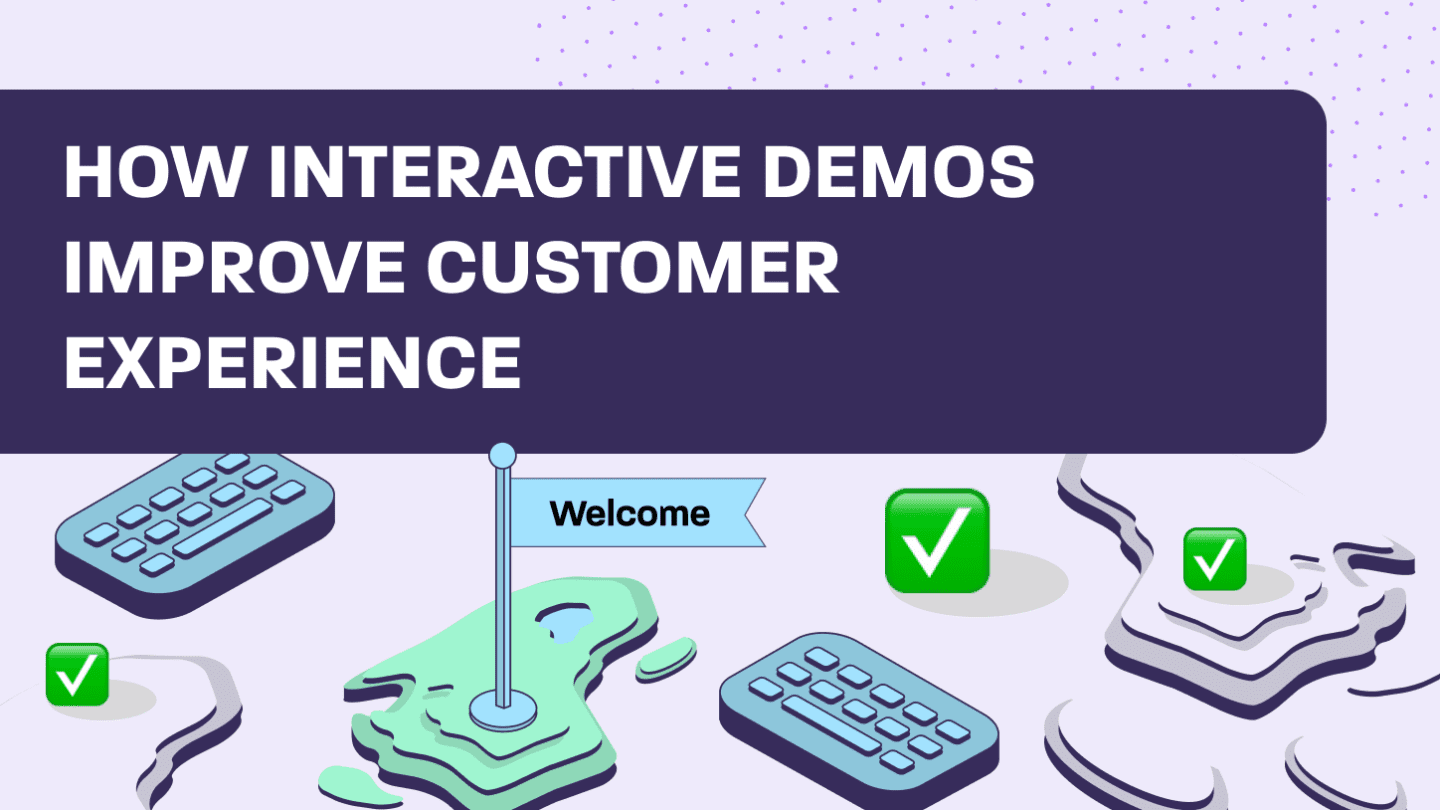We are all about coloring outside the lines.
We truly believe that life is all about marching to the beat of your own drum, speaking your truth, and dancing like nobody is watching. (Did we say enough cliches yet?)
But here’s the caveat: In order to be able to color outside the lines, you need to have those lines there at the start. In order to break the rules, you need to know them well.
Otherwise, things will get very chaotic, very fast.
The same is true when it comes to SaaS sales. While it’s important to bring your full self to the sales calls and sales demos and personalize your presentation for each prospect by responding to them and where they’re at, this has its limits.
To sell better, it’s crucial to have a guide to ensure that your sales presentation is focused and that’ll keep you tethered to your product and keep your head in the game.
What is a sales presentation?
A SaaS sales presentation is an unskippable step in your sales strategy. An effective sales presentation can help you connect with potential clients and differentiate your SaaS product from the competition. It sets the tone for every discussion that takes place as the sales process moves forward.
In addition to having the correct material, the sales presentation should be communicated in an engaging manner that’ll persuade your prospect.
Instead of just listing features and the advantages of your SaaS product, storytelling is crucial and will help make your sales presentations more memorable.
What is a sales presentation outline?
A sales presentation outline is a structured document that outlines the key aspects of your sales presentation. It offers an outline that you can return to while presenting to make sure you are giving your audience all the information they require.
If you want to make sure you don’t leave the meeting feeling stupid that you forgot to mention a whole bunch of stuff, then it’s incumbent on you to utilize a sales presentation outline. It’ll help you decide what information to cover to make sure your prospects fully appreciate the value your product can bring them.
Why do you need a sales presentation outline?
The short answer? Because you’re human.
We know you’re a genius at improv and you probably deserve a slot on SNL. But if you don’t keep track of what you intend to talk about during your presentation, there’s a good chance your message will get lost and things will be forgotten.
Likewise, you need to create a sales presentation outline to clarify your talking points, bring your ideas together, and find a way to logically deliver your content.
When creating your sales presentation outline, you may decide which themes are most crucial and gauge how much time you want to spend on each aspect of the presentation. This will help you create a sales presentation that is focused, interesting, and to the point.
How to create a sales presentation outline
A good way to think about creating your presentation outline is that it should summarize your main arguments and should follow the basic framework of your sales pitch or your product demo.
Its goal is to assist you in structuring your thoughts to ensure that your information is presented rationally.
The outline is like having a table of contents that you can refer to and expound on while presenting. Here’s the general structure of a sales presentation:
- Introduction: Keep this around 5 minutes. You’ll want to get to the point quickly because that’s why you’re all there.
- The challenge: Don’t spend too much time getting into this or you won’t have enough time to answer questions about your solution.
- Your solution: This is the meat of the presentation and where you’ll spend the most time. You’ll likely want to break down this section of the outline further.
- Call to action: Be clear and to the point. Wrap things up promptly so that your prospects know you value their time.
But to make the sales presentation outline really useful, we suggest that you add notes and comments for each step.
Remember that while you may want to present what you have and then answer questions at the end, Head of Multi-Cloud at VMware Marjorie AbdelKrime, suggests asking questions to your audience throughout the sales presentation.
“I think that it’s important that as we’re presenting we’re not just presenting at people, but we’re engaging them in the conversation,” she told us. “So every time you have a question, I’d say incorporate it into every single slide or every single component of your demo. And it also prevents people from looking at their phone because they know that they’re going to be asked something.”
Head of Multi-Cloud at VMware, Marjorie AbdelKrime
Likewise, if your prospects ask questions while you’re in the middle of presenting, it would be in your best interests to answer them as you go, so that you do not lose anyone who may have missed a detail or need a reiteration of a point you have already made.
Introduction
Start with a solid, attention-grabbing intro.
It is a great way to set the tone as you dive into what you intend to cover. It’s your chance to establish trust and credibility and get their attention.
We probably don’t have to tell you to start off the presentation with some small talk to make everyone feel comfortable and to come across as personable, likable, and trustworthy. Basically, you want to build a rapport first, which might take some practice (and healthy confidence) in order to perfect.
The next important thing to do is to make sure you understand the prospect’s business really well, know who from the company is attending, empathize with their problems, and deeply grasp how your product can help solve them. Once you understand these things, you’ll need to express them clearly so that your prospects understand what they stand to gain from this presentation.
The outline has to consider the audience, their challenges, and viewpoints. Knowing your audience not only allows you to answer their most pressing needs but also shows them you know what they need. That way, you connect with them on a personal level.
Lead Presales Engineer Rishi Kapoor suggested a good way to do that is by showing the outcome immediately at the beginning of your sales presentation.
“Show the output first,” he said. “The best time when the customer or the other person has their full attention is at the beginning. So I start off with the outcome and the output first and then I like to follow a great demo methodology where then I start asking some very key questions to the customer to unwrap the onion or remove the layers and get some more understanding in terms of what they want to see.”
Lead Presales Engineer, Rishi Kapoor
By working backward, you can make sure that you draw your prospects in and keep them engaged.
Define the prospect’s pain
Now it’s time to get a bit more technical.
At this stage, as Rishi explained, you’ll need to peel back the onion layers and define the issues that this prospect is facing. This is your chance to ask what they are hoping to learn from this presentation and demonstrate how well you understand their needs.
Dive into the pain that these issues are costing as well as the consequences. This means that instead of simply saying that they are wasting time with certain processes, you can get into how much this time is costing them and how it’s affecting other areas of the company’s growth.
Show how you solve the challenge
Now it’s time to get to the meat of your sales presentation, which will usually include a sales demo.
When you present your solution, make sure the experience is personalized and geared to the issues you just discussed. You’ll also want to choose a product demo environment that is safe from bugs, software updates, or data leaks because nothing can derail your sales presentation worse than a demo glitch.
Feel free to dive deeper into the details where appropriate and show any novel techniques, approaches, or innovations that you have come up with to solve those pain points.
During this stage, an emphasis on your value, capabilities, and success in the real world will go a long way towards creating more interest in your SaaS product.
By showing an interactive product demo, your prospects can see for themselves how your product can solve their issues and you can even send them a link for them to click through on their own after the presentation.
Explain what happens next
At the conclusion of the outline, you’ll have to come up with an impactful call to action that lets your prospects know the next steps.
Most likely, people will need to discuss it a bit further and want to know more. To help this move along, if you’re using a product demo platform like Walnut, you can send them an interactive demo leave-behind that they can click through after the meeting and share with other decision-makers.
You can also offer frequently asked questions to ensure that when a prospect asks about something, you do not choke and undercut all the work you have done up to this point.
At this point, you may also need to start handling objections and negotiating the sale.
Do you have any active promotions, discounts, deals, or offers to make? The prospects, having heard what you have to offer, how well you know their challenges, and how you intend to solve them, would be thrilled to purchase your product or service, especially if they don’t have to pay full price.
How to use a sales presentation outline
The sales presentation outline should be thought of as a map. The best way to use any map, especially if you created it, is to include all the information necessary to achieve your objectives. So, what’s the best way to leverage a sales presentation outline?
Focus on closing
Adapting your sales closing strategy to your prospects is crucial. Examine the relationship you have with the prospect as well as what is practical when you personalize your CTA.
As you consider the broader picture and the use of this presentation, ask yourself what it’ll take for this prospect to close the deal.
Rehearse your presentation
Before presenting, preparing the outline and filling it with all the information you need is a great way to refresh your knowledge about what you will present. This will help you come across as authoritative and knowledgeable.
Prepare the technology
Since the outline is an overview of what you will say, it will help you prepare any presentation aids you may need, including teleconferencing tech, slides, a projector, and so on.
Track your sales presentations and optimize your sales
Presentations are incredible when done well and can draw in the attention you need to capture your audience’s attention.
So don’t miss out on this opportunity and make sure you’re offering the best presentation possible, based on what the audience needs.
If you’re using a platform like Walnut, you can do this based on data. Using the demo analytics provided, you can track how prospects experience your product and tweak your sales demos and sales presentations based on your findings, to be even more efficient in the future.
The platform also lets you personalize your demos at scale, which allows you to optimize your storytelling and create sales presentations that’ll close deals.
So what are you waiting for? Revolutionize your sales by clicking that big “Get Started” button on the top of the screen.





